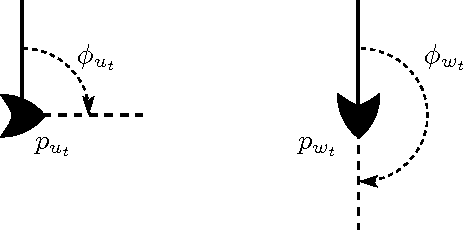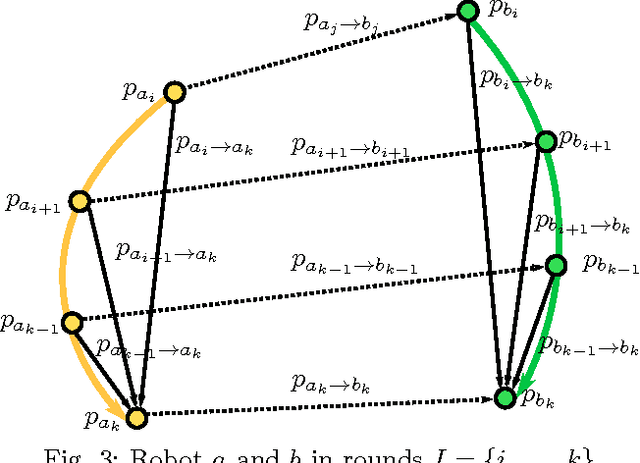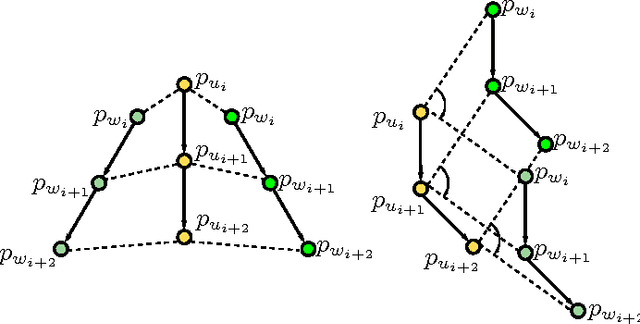Alejandro Cornejo
Long-Lived Distributed Relative Localization of Robot Swarms
Dec 06, 2013



Abstract:This paper studies the problem of having mobile robots in a multi-robot system maintain an estimate of the relative position and relative orientation of near-by robots in the environment. This problem is studied in the context of large swarms of simple robots which are capable of measuring only the distance to near-by robots. We present two distributed localization algorithms with different trade-offs between their computational complexity and their coordination requirements. The first algorithm does not require the robots to coordinate their motion. It relies on a non-linear least squares based strategy to allow robots to compute the relative pose of near-by robots. The second algorithm borrows tools from distributed computing theory to coordinate which robots must remain stationary and which robots are allowed to move. This coordination allows the robots to use standard trilateration techniques to compute the relative pose of near-by robots. Both algorithms are analyzed theoretically and validated through simulations.
 Add to Chrome
Add to Chrome Add to Firefox
Add to Firefox Add to Edge
Add to Edge